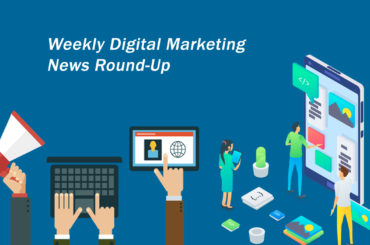Day 2 – Artificial Intelligence Ain’t Art
Speakers:
1. Elizabeth Clark (@dreamagility)
2. Annie Cushing (@AnnieCushing)
3. Merry Morud (@MerryMorud)
Moderator:
1. Michelle Robbins (@MichelleRobbins)
With artificial intelligence, machine learning, data science, business automation, creative scripting, chatbots and other cutting-edge technologies, the role of the modern search marketer changes as rapidly as the advancements in marketing technology happen.
Morud said, “None of you [PPC professionals] should be concerned about being automated out of a job.”
Creative is the real differentiator of brands, but SEM professionals arguably think about it least, since they often focus too much on operations.
Artificial intelligence (AI) still needs human input for matters such as business intelligence, ingenuity and creative.
Computers can be programmed with all the possible moves and outcomes in a chess game, but can’t understand that humans are inherently irrational, and will occasionally exhibit wildly unpredictable behavior.
AIs can’t set KPIs, nor can they ask the right questions? For instance, when attempting to target prospective customers for an expensive enterprise SaaS product, “Facebook will tell you to target everybody” and let the algorithm sort it out. However, for such a specialized and big-ticket product, your audience isn’t everybody.
Algorithms require large data sets to be most effective; a big audience to optimize against. Advertisers with small, niche industries, they may not be well-served by algorithms.
As an analogy, human creativity could be compared to the musical genius of Freddie Mercury and his band Queen which creates entirely new sounds, while AI is, at best, a cover band, iterating on what has already been created.
It’s been suggested that up to 75% of the likelihood of your ad being seen by a user has to do with creative – that it’s not enough to toss out the same old CTA. Innovative campaigns such as Dove’s “Real Beauty” campaign or AirBNB’s “Belong Anywhere” campaign could not have been created by an AI.
Case studies: Morud shares examples in which real-life events, such as sporting events and high-profile TV premieres drove higher campaign performance her team had observed from automation.
Annie Cushing said, “As we know it could be defined as an intelligence layer which, when placed atop a huge mound of data, can then analyze that data much faster than humans can.”
Some real-world examples of how AI is helping people today:
FarmLogs – A farm management mobile app that uses AI to monitor land, weather and soil conditions to give practical recommendations on finding arable land, given that, by 2050, the earth’s population is expected to reach 9.7B people, requiring a 50% increase in farmable land.
Intel Precision Medicine – Spearheaded by an Intel marketer who is also a cancer patient, this initiative is working on an AI which, by 2020, is expected to be able to diagnose a personalized cancer treatment plan within one day based on a patient’s DNA and medical history.
Predictive suicide prevention – A Florida State University scientist has worked out an AI which is being used to recognize suicide risk factors within 2 years with an accuracy rating of 80-90%.
Predictive terrorism prevention – Facebook is now using algorithms to automatically detect images and language patterns that might indicate terrorist activity.




